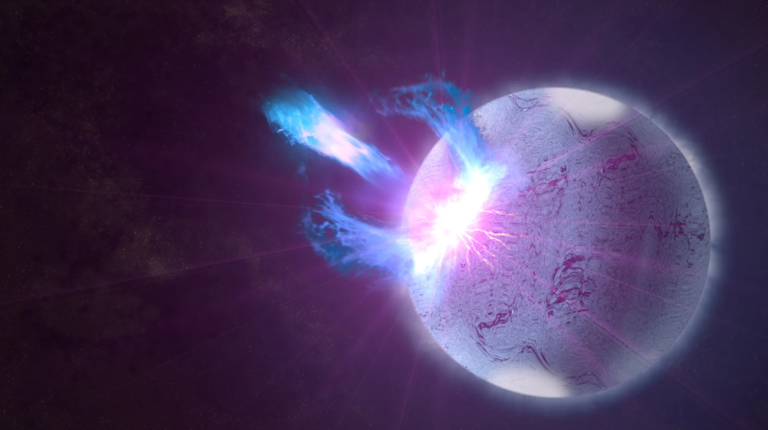A recent paper proposes the concept of ultra-potent plasma ‘blades’ capable of bisecting entire stars.
An unpublished paper asserts that stars might be cleaved in two by “relativistic blades,” which are supercharged plasma outflows sculpted by exceptionally intense magnetic fields.
A recent unconventional study suggests that “relativistic blades,” which are ultra-powerful plasma outflows molded by incredibly robust magnetic fields, might be capable of cleaving stars in two. These extraordinary star-splitting blades could offer an explanation for certain exceptionally bright cosmic explosions.

Credit: NASA’s Goddard Space Flight Center/S. Wiessinger
The researchers behind this study, affiliated with the Center for Cosmology and Particle Physics at New York University, presented their findings in a September preprint on the arXiv database. It’s worth noting that their research has not undergone peer review.
The primary focus of this investigation was to uncover the origins of specific types of gamma-ray bursts (GRBs), which rank among the most potent celestial detonations. Typically, GRBs transpire at such distant locations that they manifest as brief yet intense surges of gamma-ray radiation. While a few celestial entities possess the energy needed to generate a GRB, most astrophysicists assume that black holes or magnetars are involved, particularly when they engage in tumultuous activities like tearing apart a star. Nevertheless, scientists have grappled with elucidating why certain GRBs diminish at a significantly slower pace.
In their recent study, the authors propose that these lingering GRBs could be associated with the demise of massive stars. When a massive star reaches the end of its life, its core collapses, giving rise to a neutron star—a city-sized sphere densely packed with neutrons, encompassed by layers of hydrogen and helium. This neutron star can develop an extraordinarily powerful magnetic field through rapid compression and rotation, metamorphosing into a magnetar, the possessor of the most robust magnetic fields known in the universe.
The birth of a magnetar is a chaotic event. The star’s gravitational pull pulls the remnants of its parent star’s atmosphere toward it, while the intense radiation and magnetic fields set the surrounding plasma into frenzied motion. Prior research has shown that, within this tumultuous environment, a jet takes form along the magnetar’s rotational axis, piercing through the dying star.
However, the authors of the new study recognized that the magnetar’s magnetic fields could also project powerful bursts of radiation along the magnetar’s equator. These radiation beams, shaped by the extreme centrifugal forces generated by the star’s rotation, congeal into a blade that propagates through the star at nearly the speed of light, carrying an energy load surpassing that of a supernova explosion.
The “relativistic blade” was found to be capable of flawlessly bisecting the star as it advanced through it.
This blade travels a considerable distance beyond the star’s original radius before eventually dissipating, potentially providing an explanation for the duration of some longer-lasting GRBs.
The fate of the star is sealed during the blade’s journey, accumulating additional material that joins its outward path and instigating instabilities within the star itself, ultimately leading to its demise.
In this study, the researchers demonstrated the potential for a relativistic blade to elucidate these GRBs. In their forthcoming research, they intend to delve into the evolution of the blade over time and the precise unfolding of the ensuing stellar demise. This exploration aims to pinpoint key characteristics of this type of explosion and determine whether it can account for certain GRBs previously observed by scientists.
This article is republished from LiveScience under a Creative Commons license. Read the original article.
Do not forget to share your opinion with us to provide you with the best posts !




0 Comments